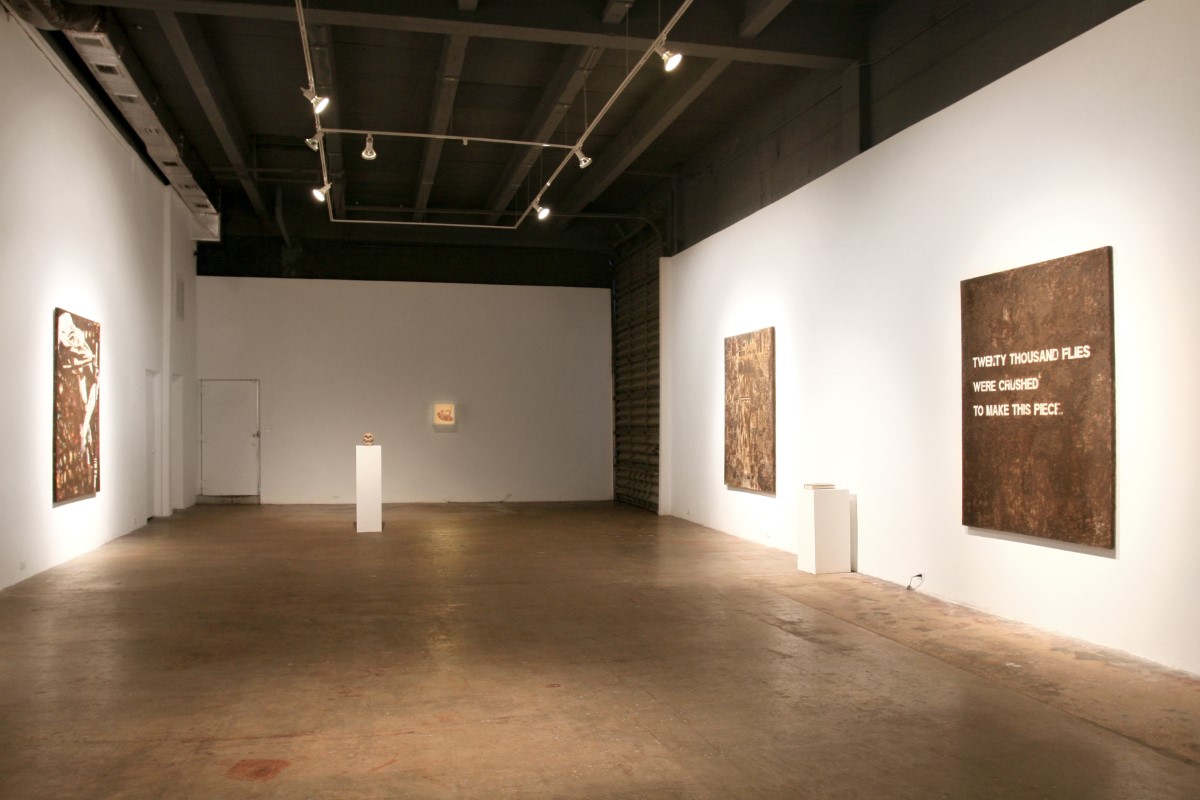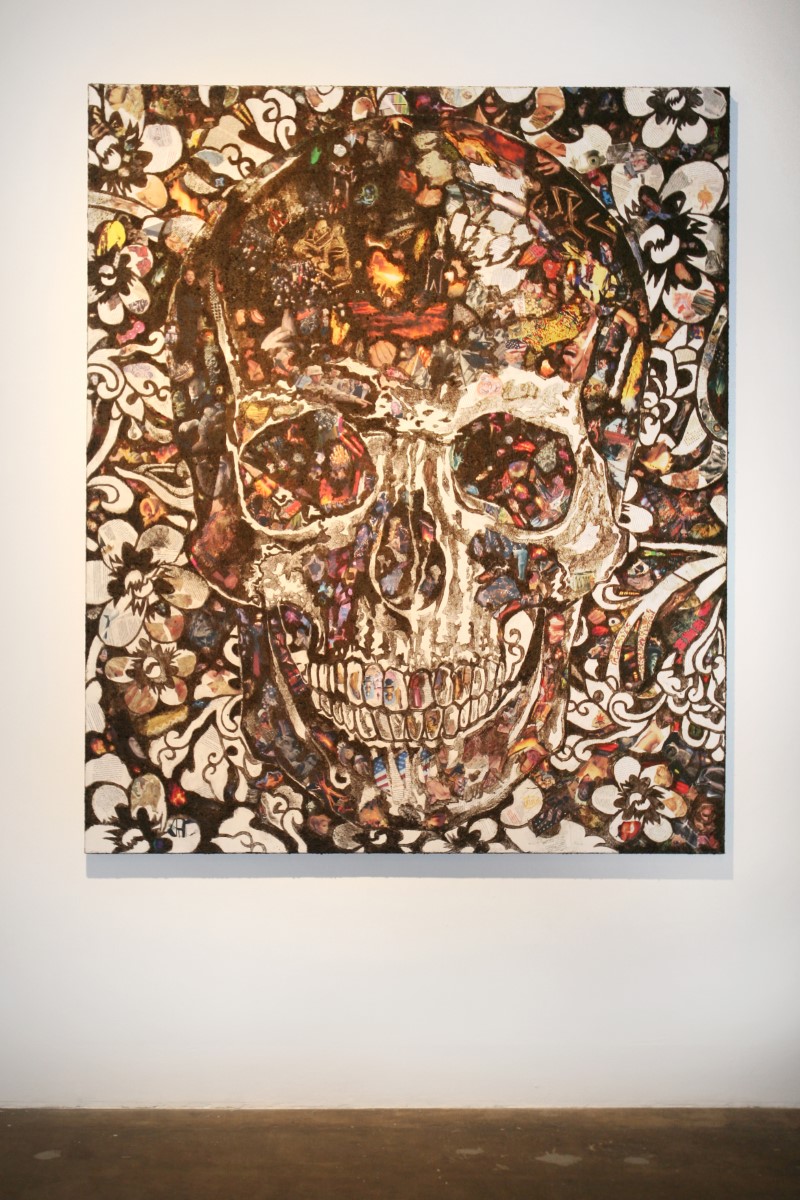Subliminal
Fabian Peña
David Castillo Gallery is proud to present Subliminal, Fabian Peña’s first solo show with the gallery. Centered in his locus of collage, sculpture and painting, and navigating his rhetorical milieu of organic and found materials, Peña argues for an entomology that is also anthropology; a mysticism that is also realism; a microcosm that is also infinity.
On observing nature, Hegel writes:
“But the boundary line of what, like elephant, oak, gold, is markedly distinctive, the line of demarcation of what is genus and species, passes through many stages into the endless particularization of the chaos of plants and animals, kinds of rocks, or of metals, forms of earth, etc. etc., that only force and craft can bring to light.” (1)
Add to this exulted litany Peña’s splintered eggshells, fragments of cockroach wings, and crushed houseflies shattered like glass. Manipulate them with the force and craft of an artist who is also a trained observer. Combine the meticulousness of scientific classification and the raw impact of materiality. This aptly describes Peña’s four large-scale paintings in Subliminal. Peña’s paintings are consumptive in their visual effect and their ontology in sources the artist personally ingests, including newspapers, fashion magazines and pornography. Like the wings of a moth, Peña’s painterly pastiche yields cumulative subjects, such as a track-and-field athlete in the climax of a high jump. The trajectory of the jump will differ relative to the spacetime of the viewer and their association with Peña’s referential materials.
Peña meets the viewer in mid-air, where one is vulnerable to transience and desire. In mid-air, it is possible, like Schrödinger’s cat, to be both dead and alive. It is possible, like Turing’s infamous test, to be both human and machine. Peña’s work is premised on grasping binary dualism. This struggle is evident in Peña’s series of light boxes. It is also clear in Modern Society, a sculpture that borrows the interface of a compact disc so that, peering through the CD’s circular center through hundreds of pages of historical texts, the viewer encounters a video of ants devouring a scarab beetle alive.
Peña’s materials and process give form to a fecundity of all that is, seen and unseen. Peña displays awe that is a fascination with nature itself, regardless whether the genesis lies in mythology, scientific inquiry or the Freudian notion of the artist as godhead. When Peña micro-mosaics a human skull with cockroach fragments, he references mysticism and natural order. By synthesizing seemingly divergent materials, Peña transforms, for example, the American Dollar and the Chinese Yuan into symbols of immeasurable value.
Peña’s artistic practice is layered with cockroach wings and egg membrane, paint and shreds of celebrity rags. Peña’s depiction of flesh becomes an intermediary between human and animal, natural and manufactured, self and other, the artist’s material and the material world. Subliminal is the quiet disrobing of the viewer, an emperor in new clothes, a sovereign of all that is, seen and unseen.
Fabian Peña was born in Havana, Cuba and lives and works in Miami, Florida. He studied at Superior Institute of Arts in Havana. Peña’s work has been shown extensively throughout the US, Europe and Latin America. His work has been featured in notable publications, including The New York Times, and The Miami Herald. Recent exhibitions include Dead or Alive at the Museum of Art and Design in New York and New Work Miami at Miami Art Museum.
(1) Hegel, Georg Wilhelm Friedrich, “The Phenomenology of the Mind,” 2nd ed. Trans. J.B. Baillie. Mineola, New York: Dover Publications, 2001, page 141.
Fabian Peña








